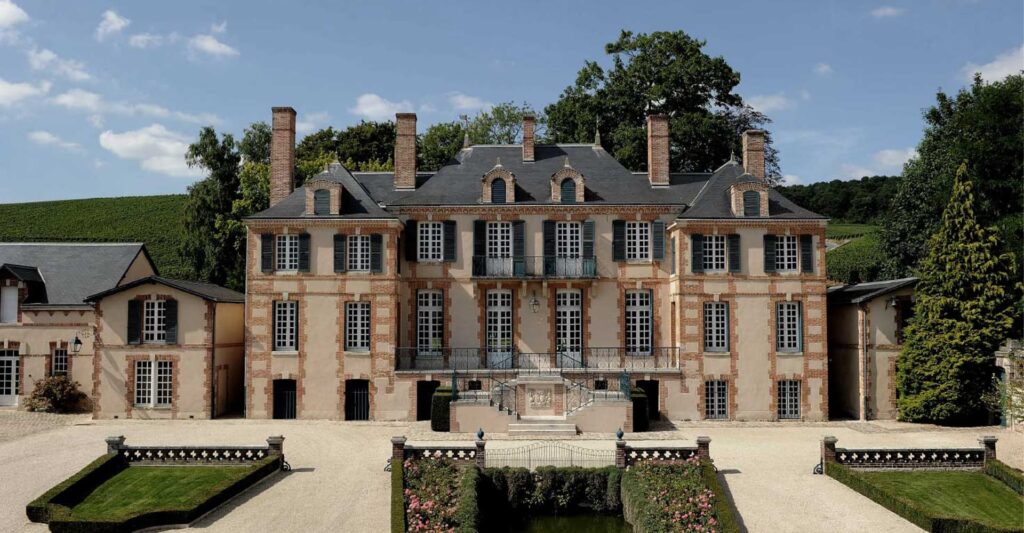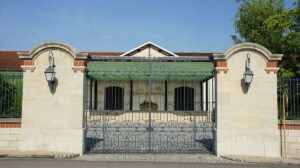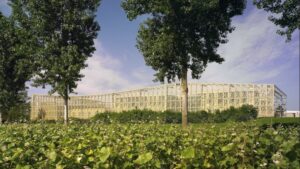The Early Beginnings: Forêt & Fourneaux
The history of Maison Taittinger traces back to 1734 when Jacques Fourneaux established the original house known as Forêt & Fourneaux. As one of the oldest champagne houses, Forêt & Fourneaux built a strong reputation for producing high-quality champagne, gaining recognition among the European aristocracy and the burgeoning bourgeoisie. The house focused on sourcing the finest grapes from the Champagne region, setting a foundation for excellence.
The Taittinger Family Enters the Scene
The Taittinger family’s association with the champagne house began in 1932 when Pierre-Charles Taittinger acquired the estate. Pierre-Charles, a former cavalry officer and politician, envisioned a future where the Taittinger name would be synonymous with top-tier champagne. He saw the potential to elevate the brand by focusing on quality and innovation, which would eventually make Taittinger a household name in the world of fine champagne.
The Renaissance of Taittinger
Under Pierre-Charles Taittinger’s leadership, the house underwent significant transformations. He relocated the headquarters to the former residence of the Counts of Champagne in Reims, an 18th-century mansion that embodied the elegance and grandeur he envisioned for the brand. This move symbolized a new era for the house, blending its historical roots with modern aspirations.
The Role of Chardonnay in Taittinger Champagne
Much like Maison Ruinart, Maison Taittinger places a strong emphasis on Chardonnay grapes. This variety forms the backbone of many of Taittinger’s champagnes, particularly in their flagship offerings. Chardonnay’s refined and delicate profile contributes to the house’s signature style, characterized by elegance, freshness, and complexity. The vineyards of Taittinger, spread across the Côte des Blancs and Montagne de Reims, provide an ideal terroir for cultivating this grape.
Innovations and Milestones
Maison Taittinger has always been at the forefront of innovation in the champagne industry. In 1952, the house launched its prestige cuvée, Comtes de Champagne Blanc de Blancs, made exclusively from Chardonnay grapes from Grand Cru vineyards. This cuvée quickly became one of the most celebrated champagnes globally, embodying the house’s dedication to quality and craftsmanship.
In 1960, Claude Taittinger, Pierre-Charles’ son, took over the management of the house. His tenure marked a period of expansion and modernization. Claude introduced new marketing strategies, expanded the brand’s global presence, and continued to innovate in champagne production, ensuring that Taittinger remained at the cutting edge of the industry.
Challenges and Resilience
The 20th century brought numerous challenges for Maison Taittinger, including the impacts of two World Wars and the Great Depression. However, the house demonstrated remarkable resilience. During World War II, the Taittinger headquarters and cellars were used as a command post by the German military, yet the family managed to protect their valuable assets and continue production.
Post-war, the house focused on rebuilding and expanding its reach. Taittinger’s dedication to quality and strategic vision allowed it to navigate these turbulent times and emerge stronger. The acquisition of additional vineyards and modernization of production facilities positioned Taittinger for future success.
Modern Era and Global Recognition
Today, Maison Taittinger is recognized globally for its exceptional champagnes and its commitment to quality and innovation. The house remains family-owned, with Pierre-Emmanuel Taittinger, Claude’s nephew, leading the company into the modern era. Under his leadership, Taittinger has embraced sustainable practices, emphasizing environmental responsibility in viticulture and production.
Taittinger’s champagnes are celebrated for their elegance, finesse, and complexity. The house continues to receive accolades and recognition from wine critics and enthusiasts worldwide, reinforcing its status as a premier champagne producer.
Iconic Champagnes of Taittinger
Several champagnes have become iconic representations of Maison Taittinger’s excellence. The Taittinger Brut Réserve, a blend of Chardonnay, Pinot Noir, and Pinot Meunier, is renowned for its consistency, freshness, and vibrant flavors. The Comtes de Champagne Blanc de Blancs, Taittinger’s prestige cuvée, is celebrated for its purity, complexity, and aging potential.
The Taittinger Brut Prestige Rosé, with its delicate pink hue and rich berry flavors, showcases the house’s expertise in crafting rosé champagne. Each of these champagnes reflects Taittinger’s dedication to quality, innovation, and the unique characteristics of the Champagne terroir.
The Legacy of Maison Taittinger
Maison Taittinger’s legacy is one of elegance, innovation, and an unwavering commitment to excellence. From its early beginnings as Forêt & Fourneaux to its current status as a globally recognized champagne house, Taittinger’s journey reflects the passion, creativity, and resilience that define the world of fine champagne.
The Taittinger family’s dedication to quality, their embrace of Chardonnay, and their innovative spirit have shaped the house’s identity and ensured its place among the elite producers of champagne. As Taittinger continues to evolve, it remains a symbol of luxury, refinement, and the timeless appeal of champagne.
Read also: 10 of the oldest Champagne houses that still exist
𐡸 𐡸 𐡸 𐡸 𐫱 𐡷 𐡷 𐡷 𐡷
Frequently asked questions
aison Taittinger stands out for its emphasis on Chardonnay grapes, its long-standing family ownership, and its commitment to quality and innovation. The house’s rich history and dedication to excellence make it unique among champagne producers.
The Comtes de Champagne Blanc de Blancs is Taittinger’s prestige cuvée, made exclusively from Chardonnay grapes from Grand Cru vineyards. It is celebrated for its purity, complexity, and aging potential, representing the pinnacle of Taittinger’s craftsmanship.
Taittinger is dedicated to sustainability through various initiatives, including reducing its carbon footprint, promoting biodiversity, and implementing eco-friendly viticulture practices. These efforts ensure the long-term health of its vineyards and the surrounding ecosystem.
Taittinger Brut Réserve is known for its consistency, freshness, and vibrant flavors. It is a blend of Chardonnay, Pinot Noir, and Pinot Meunier, offering a balanced profile with notes of fruit and a fine, persistent mousse.
Pierre-Charles Taittinger was a former cavalry officer and politician who acquired the champagne house in 1932. He envisioned elevating the brand and moved the headquarters to the former residence of the Counts of Champagne, symbolizing a new era for the house. His leadership and vision laid the foundation for Taittinger’s enduring success.



